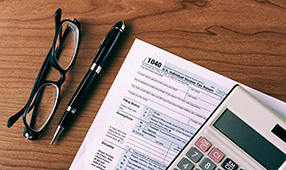Key takeaways
- 403(b) plans and IRAs let you postpone paying taxes on contributions and earnings.
- You’ll owe taxes when you take distributions from these accounts.
- Once you reach a certain age, you must take Required Minimum Distributions (RMDs).
- There are penalties if you fail to take a RMD or take less than the required amount.
The federal government invented tax-deferred retirement savings accounts to help make it easier for individuals to accumulate money for retirement. Getting investment growth while postponing taxes helps these accounts potentially grow faster. It’s a great perk.
The government is counting on you withdrawing money from these accounts after you retire to help supplement the income you get from pensions and Social Security. You’ll owe regular income taxes on these distributions in the year you take them. (Note that qualified distributions from a Roth IRA are tax-free.) If you don’t need the extra income, you can leave your money invested for more tax-deferred growth potential. But not forever.
Eventually, the IRS will collect the taxes you’ve postponed. That’s where the Required Minimum Distribution (RMD) rule comes in. You must begin taking distributions from each of your tax-deferred retirement accounts, whether you need the money or not. You can take out more than the RMD, but not less.
Note that the rules on RMDs changed recently. First, the SECURE (Setting Every Community Up for Retirement Enhancement) Act, which became law in December 2019, increased the age at which distributions are required. The old rule still applies to some people, depending on when you turned 70½.
If you turned 70½ in 2019, you were required to take your first RMD by April 1, 2020. However, note that the CARES (Coronavirus Aid, Relief and Economic Security) Act, which was signed into law in March 2020 in response to the COVID-19 crisis, waived the requirement of any distributions that had been required to be taken in 2020.
The SECURE Act also says that if you have turned, or will turn, 70½ in 2020 or later, then you must take your first RMD by April 1 of the year after you reach 72.
How to calculate your RMDs
Use the appropriate worksheet from the Internal Revenue Service to calculate your RMDs. If you have multiple IRAs and/or 403(b) plans, you must separately calculate your RMD for each account but you can take the total RMD from one or more accounts.
Get it right or pay the price
You know the old line about death and taxes. RMDs fall into the tax part. Here are a few tips for managing RMDs:
- Calculate your income needs. Create a retirement income withdrawal strategy, taking into account all income sources, including pensions, Social Security and earned income to see if you need to withdraw more than the RMD.
- Consolidate retirement accounts. Since you have to calculate a RMD from every account, consolidating multiple accounts may make the process simpler and reduce the chance for errors.
- Get it right. If you fail to take your RMD or take too little, you’ll have to pay a penalty of 50% of your correct RMD plus you’ll owe income taxes on whatever amount you actually withdrew. Consider consulting with a tax pro to make sure your RMD calculations square up.












